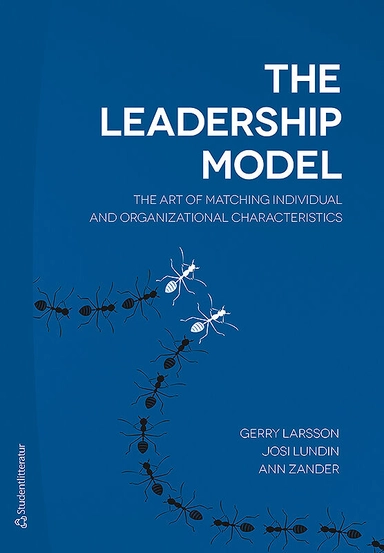

The leadership model : the art of matching individual and organizational characteristicsUpplaga 1
- Upplaga: 1a upplagan
- Utgiven: 2018
- ISBN: 9789144127026
- Sidor: 151 st
- Förlag: Studentlitteratur AB
- Format: Häftad
- Språk: Engelska
Om boken
Åtkomstkoder och digitalt tilläggsmaterial garanteras inte med begagnade böcker
Mer om The leadership model : the art of matching individual and organizational characteristics (2018)
I juli 2018 släpptes boken The leadership model : the art of matching individual and organizational characteristics skriven av Gerry Larsson, Josi Lundin, Ann Zander. Det är den 1a upplagan av kursboken. Den är skriven på engelska och består av 151 sidor djupgående information om ledarskap. Förlaget bakom boken är Studentlitteratur AB som har sitt säte i Lund.
Köp boken The leadership model : the art of matching individual and organizational characteristics på Studentapan och spara pengar.
Tillhör kategorierna
Referera till The leadership model : the art of matching individual and organizational characteristics (Upplaga 1)
Harvard
Oxford
APA
Vancouver



















